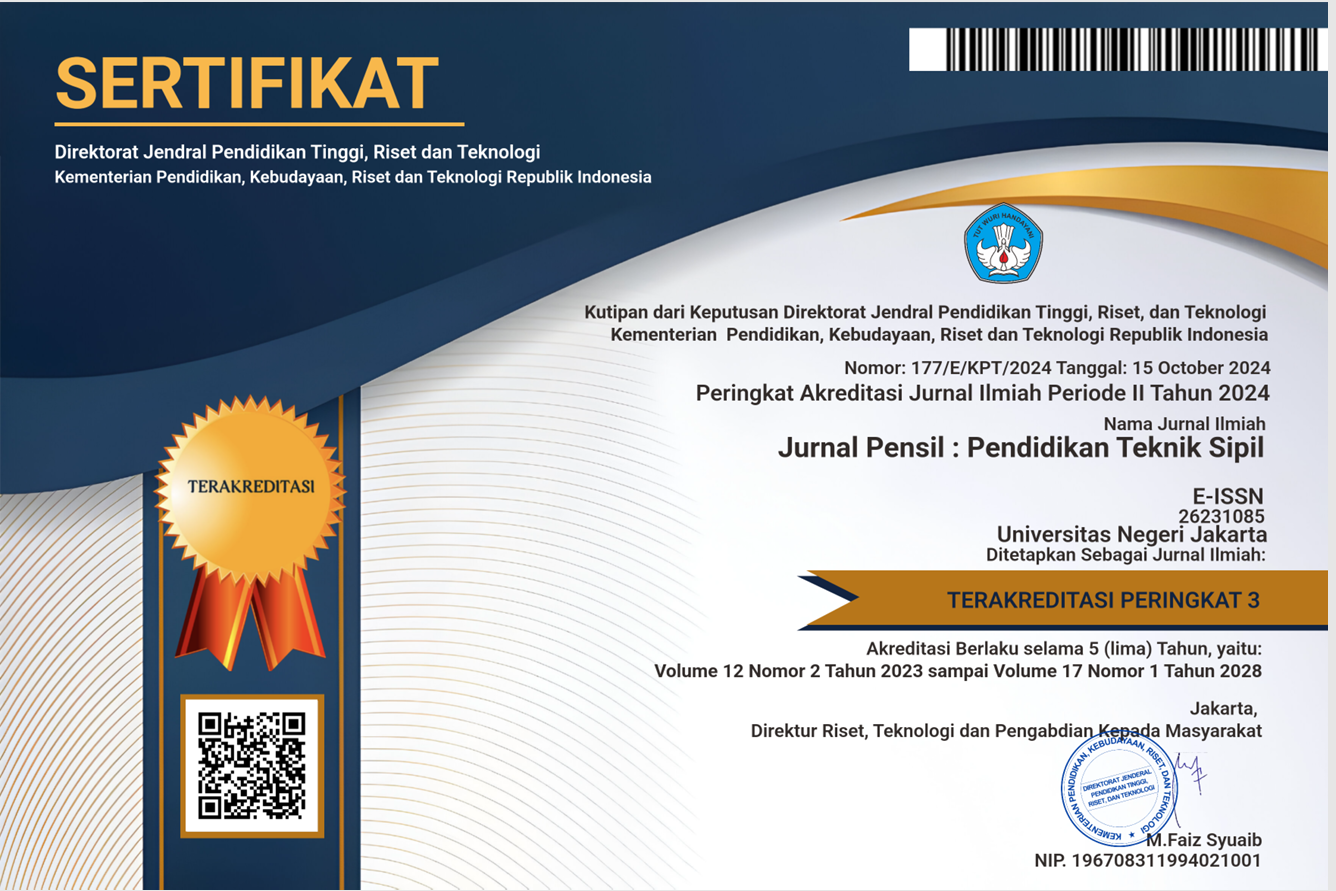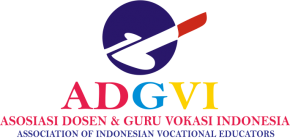PERBEDAAN MODEL PEMBELAJARAN KOOPERATIF METODE STUDENT TEAM ACHIEVEMENT DIVISION (STAD) DENGAN METODE KONVENSIONAL TERHADAP HASIL BELAJAR RENCANA ANGGARAN DAN BIAYA (RAB) SISWA SMKN 35 JAKARTA
DOI:
https://doi.org/10.21009/jpensil.v1i2.9818Abstract
This research aimed to get the empirical data about learning output difference between cooperative method of Student Achievement Division (STAD) and conventional method for cost and budget planning course subject (case study for Cost and Budget Planning subject at SMKN 35 Jakarta). The research was conducted on December 1st – 16th, 2011.
The method used is experimental method. The population is 143 students of SMKN 35 Jakarta majoring in Technical Construction Drawing (TCD). Number of samples used is 40 students consisted of 20 students from experimental class (TCD II) and 20 students from controlling class (TCD I). The instrument for this research was learning output test in a form of 25 multiple choice problems.
Data analysis was using t test with analysis preliminary test required before using normality and homogeneity test. Based on the sampling data test, those two classes basically were normally distributed and homogeny population. Hypothesis test using t test shows that tcalculated = 7.81. Otherwise, when error level (alfa) equals 0.05 and n = 20, the ttable = 1.73. So tcalculated was larger than ttable (7.81>1.73). Next, we rejected the H0 and accepted H1, so there was a learning output difference between cooperative method of Student Achievement Division (STAD) and conventional method for cost and budget planning course subject. It was shown that learning model using STAD gave better learning output rather than the conventional method. It is suggested to use cooperative learning method of STAD as an alternative way to study budget planning course subject











.png)
.png)
1.png)

